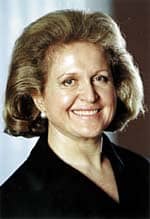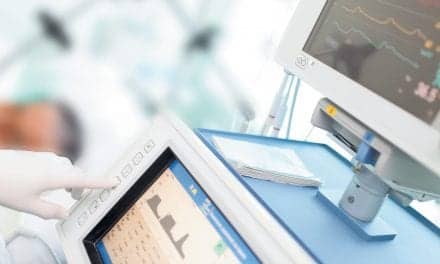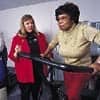The AACVPR, working in conjunction with legislators, is trying to ensure proper reimbursement for PR and CR.

It is important to understand the background regarding the problems encountered with reimbursement for pulmonary rehabilitation (PR), to help you comprehend how and why you may or may not be receiving reimbursement for your pulmonary rehabilitation program (PRP) (see Table 1). You also need to know how the legislative process works, the name of your fiscal intermediary (FI) and if it has a local coverage determination (LCD), how to bill and document correctly, who to contact for assistance in your business office, and, if you are denied for your PR services, why.
|
We have a national, critical problem in regard to nonpayment for PRPs in many states, which are constantly fighting to obtain or retain reimbursement. COPD is on the increase, so we will need more PRPs in the future, not fewer. Some programs in selected states have been fortunate and are receiving payment for portions of a PRP. However, since the Centers for Medicare and Medicaid Services (CMS) have never written a national coverage policy for PR, this allows each FI to develop an LCD. Your program might be receiving reimbursement because your state has an LCD or your FI allows you to bill with the G Codes, which are described in Table 2 (page 56). Even though the Medicare statute does not have a specific reference to PRPs or cardiac rehabilitation (CR) programs, these programs have been considered a covered service by Medicare under the “incident to physician services” clause in the Medicare statute.
|
You might be thinking, “Well, what about the private insurers?” The majority of these insurers follow Medicare guidelines regarding reimbursement, so this can be a problem. On the other hand, several private insurers have realized the cost savings they have seen after patients attend PR or CR and have begun coverage for the programs.
Even though programs in some areas are receiving reimbursement, it always appears to be a tentative situation, and for the areas that are not receiving any reimbursement at times, it feels hopeless and frustrating.
Legislative Process
The only way to “fix” this situation is through the legislative process, which is long and involved. Several of the national pulmonary and cardiac organizations have already begun to work on this challenge.
• The first item on the agenda was to bring awareness that a problem exists with the current reimbursement for PR and CR to the Congressional staff. This began when members of the American Association of Cardiovascular and Pulmonary Rehabilitation (AACVPR) went to Washington, DC in March to educate Congressional staff. The primary goal was to get specific legislative language addressing this issue into a Medicare bill.
• Before most Congressional offices would give serious consideration to our request, we needed the Congressional Budget Office (CBO) to score the legislative language. The scoring is the presumed cost of implementing the legislation. Since the AACVPR’s actual legislative language was submitted to CBO in July 2004 without official scoring, several organizations decided to fund a private sector analysis to score the legislative language.
• Once this was received, Sen Mike Crapo (R-Idaho), a member of the Senate Finance Committee and chair of the Congressional COPD Caucus, instructed the Senate Legislative Counsel to review the AACVPR proposed legislative language and make any necessary adjustments. Once drafted by Legislative Counsel, Sen Crapo formally introduced the Pulmonary and Cardiac Rehabilitation Act of 2005 in the Senate. This is known as Senate Bill S 1440.
• Now the work is to get as many as possible of the Senate Finance Committee members to support the bill, since this committee has sole jurisdiction over Medicare in the Senate. Medicare legislation is handled at the full committee, although a subcommittee does exist. Several of the organizations involved with PR and CR began a letter-writing campaign to encourage their Senators to sign onto S 1440 as official cosponsors.
• We hope by the time you are reading this article, we will have a sponsor willing to introduce the companion bill in the House of Representatives. In the House, the Ways and Means Committee and Energy and Commerce Committee share jurisdiction over Medicare.
We need to continue working with our Senators and Congressmen/Congresswomen to get them to cosponsor the bill(s). This would provide higher visibility for the bill.
Then the largest challenge begins. We need to identify a “legislative vehicle” that will include Medicare legislation onto which our bills could tagged. It is more than likely that the budget reconciliation process will afford us that opportunity as Congress attempts to reconcile budget limits mandated by budget resolutions adopted earlier this year. The Senate is scheduled to address its part of budget reconciliation in mid October, and it is unclear when the House committees will act. We are tentatively hopeful that S 1440 will be woven into the Finance Committee markup of its budget reconciliation legislation. (To locate information regarding the Senate bill, which Senators have signed on, etc, go to http://thomas.loc.gov/home/search.html, then Senate bills, then cosponsors, etc.)
Documentation and Billing
If you are currently being reimbursed for PR or CR, you must carefully follow the billing and documentation requirements for all third-party payors to ensure appropriate reimbursement. If your FI currently has a LCD that allows you to bill for services performed in PR, you must adhere to the rules, requirements, and limitations that are described in the policy. Many FIs allow billing of PR when furnished under the direction and control of a physician. Your LCD usually states whether the physician has to be physically present during the program. Many of the LCDs require groups to have no more than four patients to one health care professional. In some LCDs it states that the heath care professional must be licensed.
You must have physician’s orders that are specific to the type, frequency, and duration of the procedure, modality, or activity. A blanket PR order is not acceptable. The services must be reasonable and necessary for the patient’s diagnosis and symptoms; they must be individualized for every patient; they must show a need for your skilled services; and they must demonstrate improvement as evidenced by improvements in exercise tolerance, decreased shortness of breath, improved activities of daily living (ADLs), and decreased signs and/or symptoms of cough, dyspnea, etc. Your daily charting and team meetings need to show that the patient is working toward their goal and making progress or that the goal has been modified and why. The patient is expected to begin exercising at home and implementing what they are learning in PR into their ADLs. Remember, if it is not documented in the patient’s chart, it was not done.
Even if you do not have an LCD, many FIs permit billing with the G codes. In fact, FIs do not have the authority to deny payment for established codes as long as all instructions related to the code(s) are followed. The G codes were published in the Federal Register, Nov 1, 2001, and clarified in Dec 31, 2002 (Table 2, page 12). The HCPCS codes for respiratory therapy services described in the three G codes (G0237, G0238, and G0239) were instituted to clarify coding of services delivered by respiratory therapists or other specially trained health professionals. If you are a respiratory therapist or registered nurse, you must bill with the G codes. If you are a physical therapist or occupational therapist, you would continue to bill with your current CPT codes. When billing with the G codes, you must bill and chart according to the type of code (timed versus nontimed). G2039, the group code, is not defined by a specific time frame, therefore you can report it as only one unit and it can be used only one time per day, no matter how many disciplines see the patient that day. G0237 and G0238 are timed codes. The units of service billed are based on the total time actually spent in the delivery of the service. Table 3 describes how to use the 8-Minute Rule to help you determine the total number of units to apply. Documentation should include the specific procedure provided, the time you began and ended, and the code you billed.
|
Business Office
Your business office has a wealth of information regarding billing, charges, LCDs, etc. Talk to your business office and find a person who will help you with your billing questions. Let them know that you are interested in any information they receive from your FI in regard to PR and billing practices. Remember they are very busy, and PR is a very small portion of the bills they submit every day, so help them understand why your program is important. Share some of your patient success stories with them, and thank them for all of their help. They can be your best friend in helping you through the internal billing maze, along with telling you what the reason is, if your chart(s) are requested for an audit. If you are asked to submit medical records, make sure you send everything that is being requested. The billing dates, charges, and charting all must match. If an audit results in a denial, the business office can tell you about the appeal process. Your compliance department knows the specifics about Medicare appeals and they should be your guide if you decide to file an appeal.
Conclusion
We have come a long way in working toward a national coverage determination for PR and CR, but we have not reached our goal yet. What should you be doing right now to help with this? You need to belong to your state and national organization. There is strength is numbers, and it is expensive for our organizations to hire a lobbyist and send people to Washington, DC to continue to fight this ongoing battle. If you are not involved, your program and job could be in jeopardy. The worst part is that the patients will suffer as they would no longer have access to programs that we know work.
In the meantime, to keep your program viable to your facility, you should be working with your medical director to make sure that your administration understands the importance of PR and its outcomes. When they look at the bottom line, they need to be aware of the indirect revenue the program brings in to your facility every time a test is ordered for a patient who is being referred to the program, or if your assessment has identified a new problem. PR is a community service and is a great referral base for patients, and it is also the standard of care for patients with COPD as noted in the GOLD document. When your patients are happy with your program, they are going to refer their friends and family to your facility. And do not forget the outcomes. We know that PR decreases hospitalizations and emergency department visits, which saves the hospital money. Not only are we saving money by keeping the patients out of the hospital and at home, but we also have extremely satisfied patients. They have a new lease on life as they enjoy their improved qualify of life. They are now able to participate in activities they enjoy, such as playing with their grandchildren or golfing, shopping, traveling, and enjoying other hobbies that they thought they would never be able to do again. This is why we continue to “Fight for Reimbursement.” We know our programs are needed.
Lana R. Hilling, CRT, RCP, is coordinator of the pulmonary rehabilitation programs for the John Muir/Mt. Diablo Health System in Concord and Walnut Creek, Calif. She is secretary for the AACVPR and a member of the Health Policy and Reimbursement Committee.










